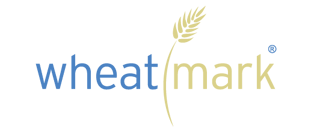This is a question that many beginning writers have. How long is too long? And how long is not long enough? While every book can be an exception, you are far better staying within suggested guidelines for book length if you want your book to be accepted by publishers, parents and young readers.
Every book type has its own recommended length based on the age of the reader, education and book type. Obviously a thick paged picture book for a 3-year-old is going to be vastly different from The Mouse and the Motorcycle, a book for a ten year old to dig into for the first time.
Picture Books: Targeted for 2 to 8-year-old kids, this type of book typically has between 400 – 800 words. There are 5 basic types of picture books.
1. Young Picture Books aim for the 2 to 5-year-old. These are basic learning books that creatively teach colors, numbers or simple, fun stories for bedtime. Many of these books are written in rhyme or in a simple sing-song meter that is catchy and fun. Word count is between 200 and 400 words.
2. Basic Trade Picture Books as seen in most stores will typically have a standard set of 32 pages. These books are geared for children between the ages of 3 and 8 years old. Each page often has only one line to keep it simple and easy for a young child to follow. The word count to aim for with this type of book is usually between 500 and 600 words.
3. Novelty Books include pop-ups, puzzles, pull-tabs and other interactive features. In some cases, these books will have no words at all, such as for the very small child who likes to feel the fluffy cotton tail of a bunny or push the squeaker for a duck quack. If the book offers more complicated instructions such as for creating an origami bird or a fashionable paper doll, the word count can extend as high as 1,500 words.
4. Picture Story Books for older children between the ages of 6 and 10 include more text with each picture. These books can have as many as 1000 – 3000 words and may have pages without a picture. These books along with the chapter books (below) are for the child who is beginning to read and can follow word concepts without pictures. Often a parent or teacher might read the book aloud and then it is lovingly read again and again by the young reader.
5. Chapter Books are those magical books that transition the young reader from pictures to text. The chapters are short and simple with only an illustration or two per chapter. These books are for readers between the ages of 6 and 10 and can have as many as 3,500 words. Children often read these books completely on their own. Chapter books are often good for serials as children delight in one story and want more.
Word count is very important to writing books for young children. Publishers know this and often won’t even look at a book submission that is too long. Too many words are a warning sign that the author does not know how to write for the age group and that the book has not been edited seriously enough.
First time authors need to do everything possible to ensure their book gets a chance. Be professional and not emotional. Authors who think that their story is so good that a few extra hundred words won’t matter will find their manuscript on the slush pile. One glance. One look. Toss it.
Self-publishing authors will find that parents can be as critical an evaluator in making decisions for book length as any editor. The actual process of why they reject a book may not be as obvious to them but in most cases extra words mean the book is aimed at a higher level of reader than it is marked for. Take word count seriously and work within the accepted guidelines for the age group you are writing for. It’s only one point in writing a picture book, but it is an important one.
